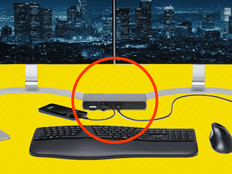“It’s full lifecycle management,” he says. Vendors provision devices, manage setup and deploy software. DaaS can also include cybersecurity protection and tech support, depending on the contract.
A key benefit of DaaS for state and local governments is that it is cost-effective. Pricing is simple and predictable.
“Predictable spending is key, especially with organizations that have fixed budgets,” Rose says.
DaaS Offers Telemetry and Predictive Analytics to Agencies
State and local governments can use the telemetry features of DaaS programs to make decisions on what devices employees need based on usage profiles. These include information on processors, memory and battery life, says Todd Gustafson, president of HP Federal.
“Those assets may get redeployed in the workforce through reconditioning. They look like they’re brand-new,” Gustafson says. “It works, and it works efficiently.”
Along with telemetry, DaaS programs can include dashboards with predictive analytics to help state and local governments determine how many assets they have, which ones are at risk and how many need to be refreshed, Gustafson says.
“It can give you a very consolidated way to manage the budgetary process and see what your risk profile looks like,” he says.
HP’s DaaS program, called Managed Device Services, focuses on a streamlined user experience in addition to device management.
“That’s a big change from a few years ago, when the industry was really steeped in DaaS financing and break-fix,” says Rebecca Campbell, vice president of channel managed solutions at HP. “Now it’s a whole gamut of defining, assessing, deploying and even doing security services up front, then coming around and managing the assets through the full lifecycle.”
LEARN MORE: Modern workspace management empowers remote workers.
How Does DaaS Benefit State Governments?
In Louisiana, the Office of Technology Services (OTS) uses a DaaS plan for end-user desktop hardware, says Louisiana CTO Jeremy Deal.
“It’s really a shift away from a traditional PC purchase and the deploy-and-support model that organizations have used for a really long time,” Deal says. “In the DaaS model, organizations are paying for a service that includes PC hardware, but it also includes all of the ongoing management and support that accompanies those hardware components.”
DaaS also covers order fulfillment, machine distribution, configuration, inventory management, decommissioning and asset recovery, Deal says.
Louisiana’s OTS serves as a managed service provider and an “ancillary agency” for the state’s executive branch, Deal says. While other states use third-party vendors to provide IT services, Louisiana handles such services internally through OTS. This includes DaaS, Deal says.
“We manage all of the end-user phones, computers and peripherals, plus all of the other network back-end infrastructure, security and application development,” Deal says.
Louisiana OTS runs the DaaS service like an order catalog, and state employees use a portal to choose the laptops, desktops, monitors and docking stations that work for their departments. OTS then fulfills the orders.
“We have these things in a rolling inventory,” he says. “We already know what devices are in our standards list, and we can pull them off the shelf and fulfill those things much more quickly.”
The state maintains standard configurations, and then agencies customize configurations based on their needs.











